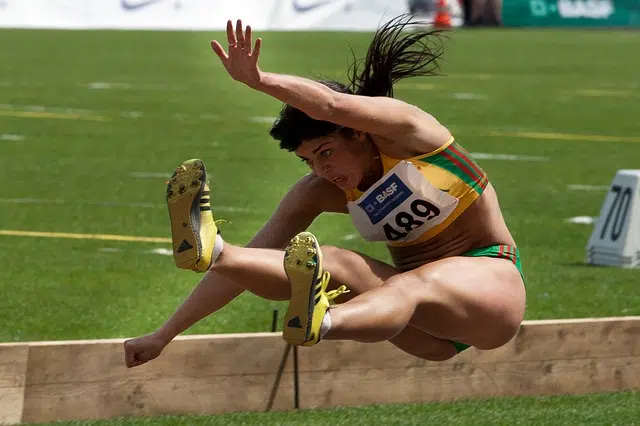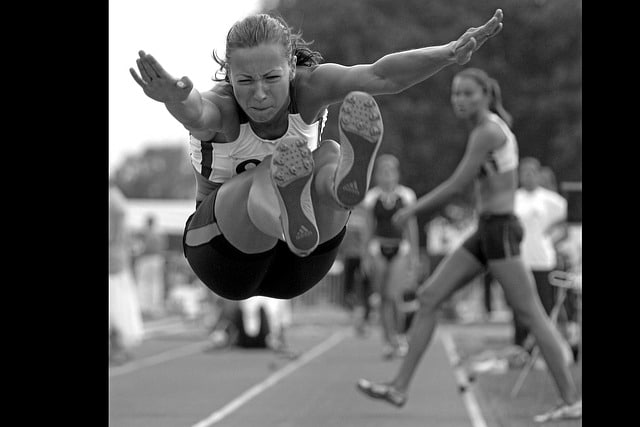
The triple jump is an athletics test.
The result of jumping is known as a jump . It is a movement that an individual executes to get off the surface and cover a certain distance or reach something that would not otherwise be accessible. Triple , for its part, is something that contains another thing three times or that is accompanied by two other identical things.
In the field of athletics , there are various tests that involve jumping. In the case of the triple jump , the discipline consists of placing the feet twice alternately and then landing on the sand with both feet together.
Development of the triple jump
Performing the triple jump, also known as triple jump , involves the development of a sequence composed of a first jump on one leg, a second jump repeating the same leg and a third after changing legs. This last movement is the one that gives the greatest momentum until reaching the sand pool .
As in the long jump , there is a limit that the athlete cannot exceed before starting his jump (in this case, the first of the three jumps that make up the movement). To measure the mark reached by the competitor, the closest footprint left in the sand is considered.
The men's world record in the triple jump belongs to the Englishman Jonathan Edwards in 1995 , when he reached a mark of 18.29 meters . The best female record in the triple jump, for its part, is owned by the Ukrainian Inessa Kravets ( 15.50 meters ), also achieved in 1995 .

To develop the triple jump, a sequence of three jumps is carried out.
Discipline technique
The triple jump technique is divided into four phases, which are the approach run and the three jumps themselves. In the first of them, the athlete begins by gaining the necessary momentum for the race, and then increases his speed to the maximum possible. In this case, the approach run is similar to that used in the long jump (also known as the long jump ), although its rhythm should vary to a lesser degree and its last steps should not have as much amplitude; In other words, it is more homogeneous than the race on the other jump.
The time comes for the first jump , whose take-off is also similar to that of the long jump, although its jump must be deeper. When the athlete touches the board located on the ground, he must prepare for the kick (in fact the board is called a kick board ), by flexing the leg that he will use for the push. Next, you must extend said leg (which is also known as the swing leg ), and raise the other, the free leg, flexed.
While suspended in the air, you must move your legs as if you were walking , more precisely taking two steps, while the trunk remains vertical. With the first step, the leading leg moves back; Then, they cross each other to overtake it again, and this is repeated. Once the second step is completed, the athlete must land with the kicking leg, which is why they must always be in front.
As soon as the kicking foot touches the ground, the second jump begins, throughout which the trunk must remain straight and both legs bent, although the one behind must try to reach the other (the free one), which is almost at 90° and at hip height . Unlike the first jump, no steps should be taken in the air.
The last phase of the triple jump is very similar to the long jump. It is worth mentioning, on the other hand, that the speed with which the athlete reaches this point is much lower. Just before falling, it is necessary to extend the legs forward to adopt a position similar to the one we have when we are sitting.
